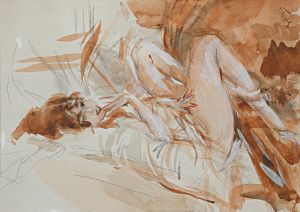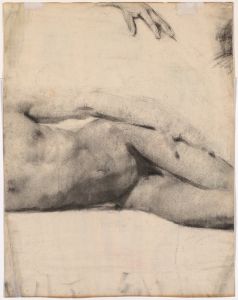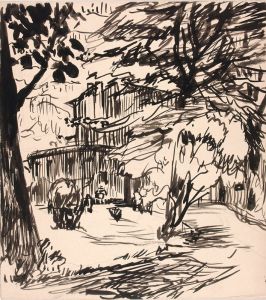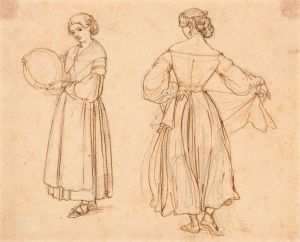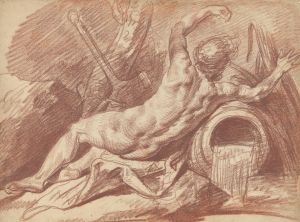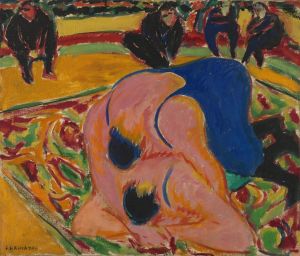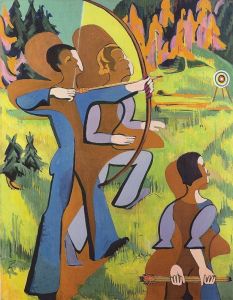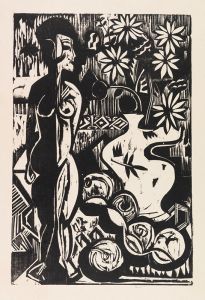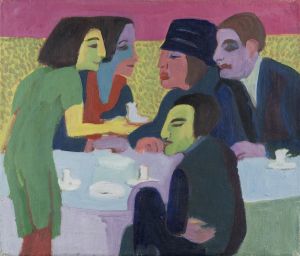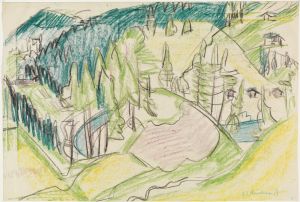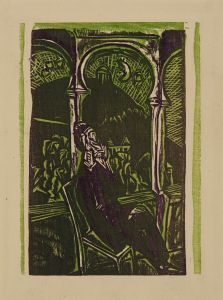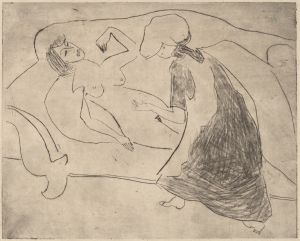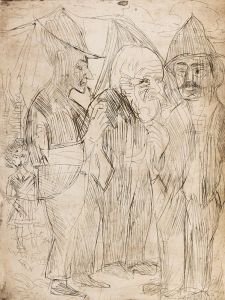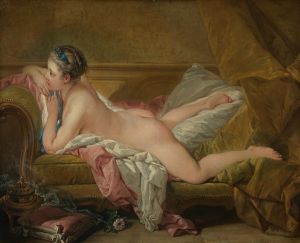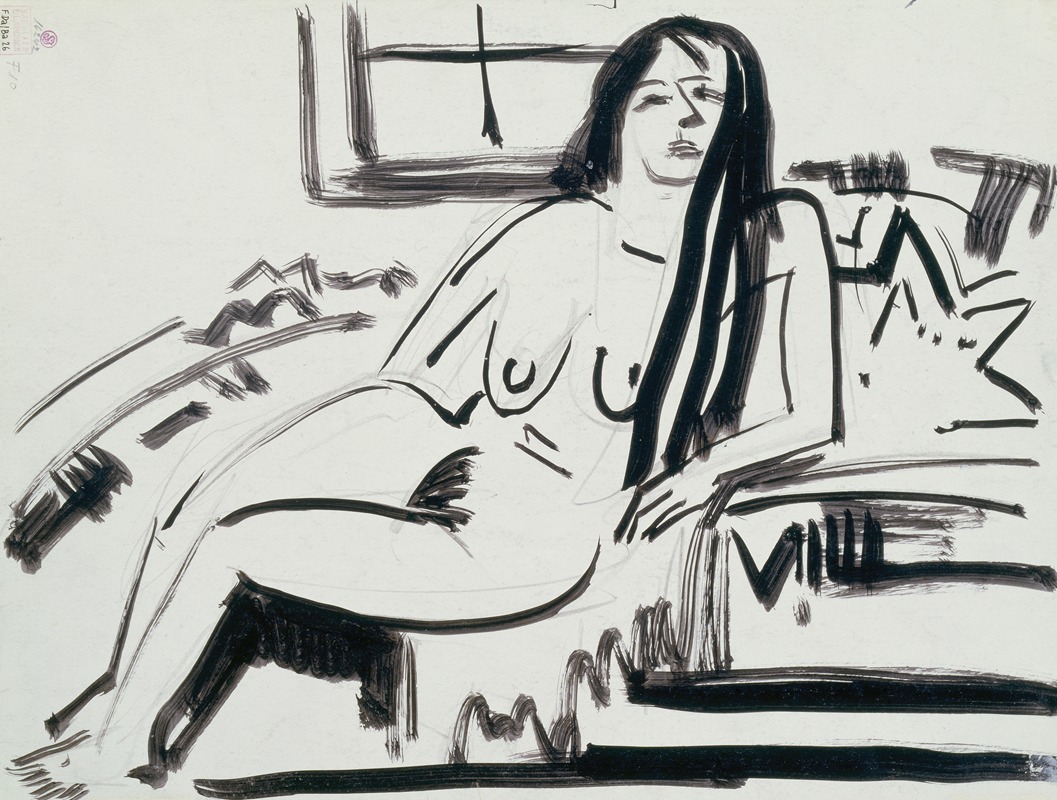
Lying nude
A hand-painted replica of Ernst Ludwig Kirchner’s masterpiece Lying nude, meticulously crafted by professional artists to capture the true essence of the original. Each piece is created with museum-quality canvas and rare mineral pigments, carefully painted by experienced artists with delicate brushstrokes and rich, layered colors to perfectly recreate the texture of the original artwork. Unlike machine-printed reproductions, this hand-painted version brings the painting to life, infused with the artist’s emotions and skill in every stroke. Whether for personal collection or home decoration, it instantly elevates the artistic atmosphere of any space.
Ernst Ludwig Kirchner's painting Lying Nude is a notable work by the German Expressionist artist, who was a founding member of the influential art group Die Brücke (The Bridge). Kirchner, born in 1880 in Aschaffenburg, Germany, was a central figure in the early 20th-century Expressionist movement, which sought to convey emotional experience rather than physical reality. His works are characterized by bold colors, dynamic compositions, and a raw, emotional intensity.
Lying Nude exemplifies Kirchner's approach to the human figure, which often emphasized a sense of immediacy and psychological depth. The painting depicts a reclining nude figure, rendered with the artist's signature angular lines and vibrant palette. Kirchner's nudes were not intended to be idealized representations of the human body but rather explorations of form, emotion, and the relationship between the figure and its surroundings. The work reflects the influence of non-Western art, particularly African and Oceanic art, which Kirchner and his contemporaries admired for its perceived authenticity and directness.
The painting is believed to have been created during a period when Kirchner was deeply engaged with the themes of modernity, sexuality, and the human condition. His nudes often challenged traditional academic conventions, presenting the human body in a way that was both intimate and confrontational. The reclining pose of the figure in Lying Nude suggests relaxation and vulnerability, while the bold, expressive brushstrokes convey a sense of vitality and tension.
Kirchner's work, including Lying Nude, was shaped by the cultural and social changes of the early 20th century. The Die Brücke group sought to break away from the constraints of academic art and embrace a more spontaneous, emotional approach to creativity. Their works often featured subjects drawn from everyday life, including urban scenes, landscapes, and the human figure. The group's emphasis on directness and emotional expression had a profound impact on the development of modern art.
During his lifetime, Kirchner faced significant challenges, including the trauma of World War I and the rise of the Nazi regime in Germany. In 1937, the Nazis labeled his work as "degenerate art," and many of his paintings were confiscated or destroyed. Despite these hardships, Kirchner's legacy as a pioneering Expressionist artist endures, and his works are celebrated for their innovative approach to color, form, and emotion.
Specific details about the provenance or current location of Lying Nude are not widely documented. However, Kirchner's works are held in major museum collections worldwide, including the Museum of Modern Art in New York, the National Gallery of Art in Washington, D.C., and the Kirchner Museum in Davos, Switzerland.





